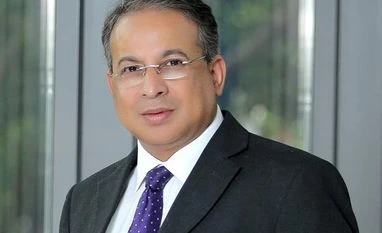Overcoming the baggage of its stranded 4000 Mw Mundra UMPP, Tata Power has set off on emerging businesses like automation and customer-centric solutions. The largest private integrated power producer is pioneering the 'Demand Response' system in the country which is capable of accurately predicting and managing load. Praveer Sinha, chief executive officer & managing director, Tata Power talks to Jayajit Dash on the unique distribution system dovetailing electrical technology, communications technology & IT. Paring debt also figures at the top of Tata Power's agenda. Edited excerpts-
What are Tata Power's next generation plans in power and how will customers profit from it?
We are eyeing growth in emerging areas in European and American countries. These areas mark the convergence of electrical technology, IT and communication technology. In each of these areas, we are talking of leadership. And, we are ensuring that these technologies are effective in the Indian context. We do "Demand Response" and also battery storage solutions which we have done recently in Delhi. We are talking about EV (electric vehicle) charging facilities and how we can manage the load, even when a large number of EVs have to be connected to the grid.
So, are these technologies developed in house or are you tying up with foreign players?
For development of technologies, we have partners like Siemens, IBM and 3M. They develop the technology, but they do not know how to use it - the benefits that can come to the consumers, the utilities and the stakeholders. We are partnering with a whole lot of technology partners who are big international names. That apart, we are tying up with institutions. We work very closely with MIT, University of Chicago and other research institutions.
Can you give us a peek into how these technologies work?
There are days when you have more consumption and days with less consumption (of power). We need to manage the load. Today, we are sourcing energy from different power plants- there are coal based plants and the intermittent renewable power plants. You cannot have a scenario of excess or deficient power. For optimum load management, we do a whole lot of data analytics. Also, we do machine learning and based on that, we do accurate data prediction. Say for instance, if the demand surges during the peak hours, you can tie-up with large commercial consumers and can check if they can reduce load for an hour. Or during afternoon in a shopping mall when there isn't much load, they can run four or even two escalators instead of eight.
Under home automation, we enable the consumers to manage their load by controlling appliances like air conditioners and washing machines while they are in office or elsewhere. Similarly, if you have to charge 100 e-vehicles simultaneously, you have to manage the load in such a way that it does not lead to burning of transformers. This distribution management system is only done by Tata Power. We have integrated components like SCADA (Supervisory Control & Data Acquisition) and GIS.
Coming to your core business, have you abandoned plans to build new coal-fired plants?
We are not building any greenfield coal based projects. We feel the long-term PPAs (power purchase agreements) will not come. There are a large number of stressed power projects- good projects in terms of technology and equipment. We are looking at those kind of opportunities.
You also have a firm focus on building your green power portfolio...
Renewable energy is our key area of growth. Presently, our renewable capacity is around 3000 Mw. We will be adding four times over to reach 12,000 Mw in the next three to five years. Our growth will be driven primarily by solar. We are looking at investment structures that help us.
So, is Tata Power also open to tapping Infrastructure Investment Trusts?
We keep looking at these opportunities. There are some issues and government guidelines. We will go for anything that brings value to our shareholders.
Your debt has been swelling. How do you plan to contain it?
We are working on managing debt. We have started the divestment process. We will divest all non-core assets. If we are not able to service debt, we will have a problem. We are looking at divesting some of the foreign assets - the ones in Zambia and South Africa. Selectively, we are also looking at divesting non-core businesses in India. Divestment is very much at the top of our agenda.
Will Tata Power retain the Mundra plant in its portfolio or are you looking to sell it off?
It (Mudra plant) will be very much a part of our portfolio. We have started negotiating with states on reworking the PPAs. For stressed assets in general, we keep working closely with the government - how we can make them financially viable so that they have long-term PPAs and fuel supply arrangements.













)
